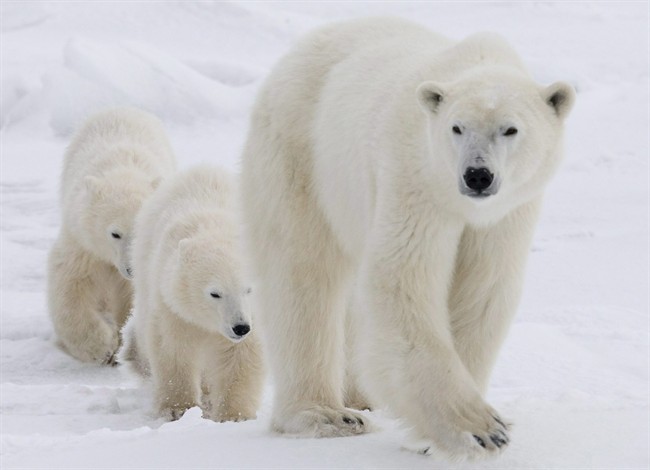WINNIPEG – Manitoba is deciding whether to lift restrictions on eco-tourism as it prepares to designate a new polar bear provincial park on Hudson Bay.

The province is hiring a consultant to review the number of off-road tundra vehicles used to carry tourists around polar bear country near Churchill and to recommend how many should be allowed to operate in the new park.
There are 18 permits right now for tundra vehicles — a number that has been in place since the early 1990s. The specially designed buggies travel along designated trails and give people a chance to see polar bears up close.
Some are concerned that more permits would attract operators who wouldn’t know how to navigate safely around the animals, which could in turn damage Manitoba’s international reputation as the polar bear capital of Canada.
But Jessica Elliott with Manitoba Conservation says the province just wants to ensure it’s striking the right balance between eco-tourism and wildlife protection.
“Manitoba Conservation has been questioned in the past by tourism operators up there as to how we were issuing permits or … setting the number of permits that could be issued and the number of vehicles that could operate,” said Elliott, who is the department’s head of park system planning and ecology.
“It is really to ensure we are managing visitors and tourism in the area properly.”
Canada is home to two-thirds of the world’s polar bears, but environmental experts say climate change could make the Hudson Bay population extinct within a few decades. Researchers say the iconic mammals are under serious threat as global warming melts the sea ice the animals need to hunt for seals.
In its last throne speech, Manitoba’s NDP government announced its intention to designate a huge swath of land on Hudson Bay as a polar bear provincial park. In a recent request for proposals, Manitoba Conservation put out a call for an expert to determine the number of tundra vehicles, suggest ways of managing their operation and assess the “allocation of commercial tourism opportunities within the wildlife viewing area.”
The consultant’s report is due in December.
John Gunter, president and CEO of Frontiers North Adventures, said he’s worried the province, based on a superficial study, could upset the delicate balance that exists between experienced tour operators and the region’s polar bears.
Manitoba is known around the world for its polar bears, he said, and all it would take to damage that reputation would be one novice operator. Gunter said his company has spent years perfecting safety operations and environmental practices so it doesn’t disturb polar bears or their habitat.
“It has taken us 30 years to earn this reputation,” said Gunter, who runs the largest tundra-buggy operation, with 12 of the 18 permits. “Credibility takes that long to earn, but it disappears in minutes.”
The area may not be able to handle an increase in tour operators, he added. Hotels in Churchill are already booked solid during the peak polar bear migration season of October and November.
Ron Thiessen also has concerns. The executive director of Manitoba’s Canadian Parks and Wilderness Society said the health of the polar bears must be a priority because, without a thriving population, the tourism industry in northern Manitoba wouldn’t exist.
Any increase in the number of permits issued must be based on “sound science” and input from local people, he suggested.
“Hopefully, it’s all with an intent to ensure a healthy landscape with healthy polar bears.”
Some researchers say increased tundra-buggy traffic doesn’t come close to being the gravest threat to the bears. The University of Alberta’s Andrew Derochers, one of the country’s leading polar bear experts, said the vehicles don’t hurt the bears as much as disappearing sea ice does.
Bears know where the buggies travel and can avoid them if they want, he said, and tourism nurtures an interest in the animals’ survival among tourists.
“But if the bears don’t have sea ice, there is really a limited time offering for some of these issues.”



Comments